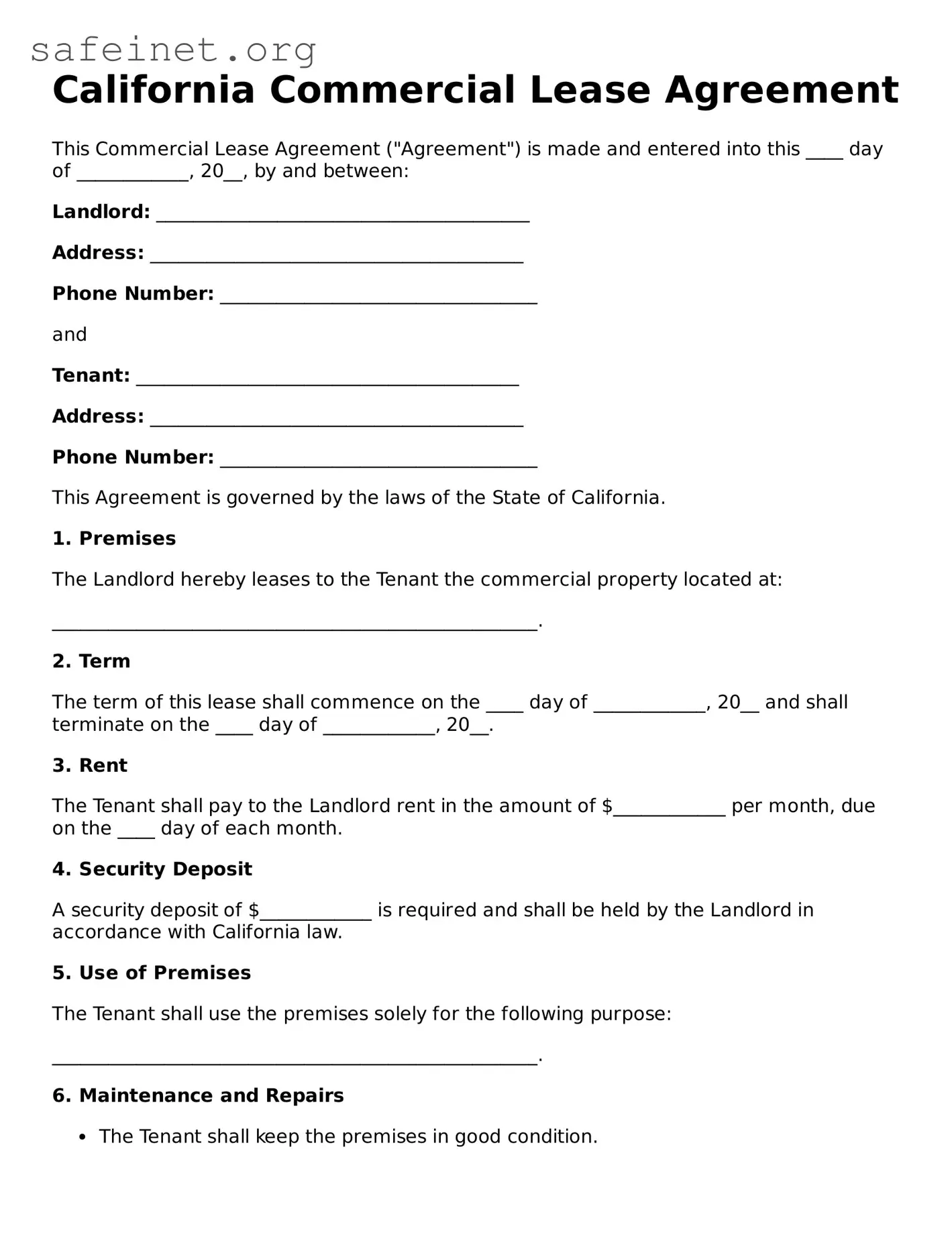California Commercial Lease Agreement
This Commercial Lease Agreement ("Agreement") is made and entered into this ____ day of ____________, 20__, by and between:
Landlord: ________________________________________
Address: ________________________________________
Phone Number: __________________________________
and
Tenant: _________________________________________
Address: ________________________________________
Phone Number: __________________________________
This Agreement is governed by the laws of the State of California.
1. Premises
The Landlord hereby leases to the Tenant the commercial property located at:
____________________________________________________.
2. Term
The term of this lease shall commence on the ____ day of ____________, 20__ and shall terminate on the ____ day of ____________, 20__.
3. Rent
The Tenant shall pay to the Landlord rent in the amount of $____________ per month, due on the ____ day of each month.
4. Security Deposit
A security deposit of $____________ is required and shall be held by the Landlord in accordance with California law.
5. Use of Premises
The Tenant shall use the premises solely for the following purpose:
____________________________________________________.
6. Maintenance and Repairs
- The Tenant shall keep the premises in good condition.
- Repairs shall be made promptly by the Tenant, except for those due to normal wear and tear.
- The Landlord will be responsible for major structural repairs.
7. Insurance
The Tenant is required to maintain liability insurance on the premises with coverage of at least $____________.
8. Termination
Either party may terminate this Agreement by giving ____ days written notice to the other party.
9. Governing Law
This Agreement shall be governed by and construed in accordance with the laws of the State of California.
IN WITNESS WHEREOF, the parties have executed this Agreement as of the date first above written.
Landlord Signature: ____________________________
Date: _______________________________________
Tenant Signature: _____________________________
Date: _______________________________________
